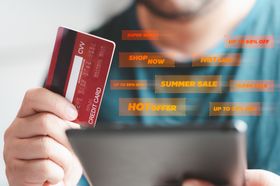eCommerce A/B Testing: Take the Guesswork Out of Your eCommerce Store Optimization
Updated November 19, 2024.

So many factors come into play when operating an e-commerce store. What do your customers like? What will they respond to? Sure, a website or an app may look amazing, but if your clients don’t respond to the visual merchandising strategies, your shop won’t be as lucrative as it could be.
That’s where A/B testing comes in. By testing out different variables, you’ll learn what your customers respond to when it comes to visual options. We’ve already covered the topic of the search bar and search engine results pages (SERP) in part 1 of this 3-part series, but just like in a brick-and-mortar store, merchandising plays a huge role in what will attract your customer’s eye, what will make them buy more and what will, ultimately, make you more money.
Here are some visual merchandising strategies that have proven game-changing for many retailers. A/B test them to see what works for your shop, while keeping in mind that mobile and desktop users may respond differently to certain tests.
Merchandising Strategy #1: Group
Look at your products and think of different ways you could group them together in order to help customers find what they’re looking for in a more efficient manner, or even to boost your AOV (average order value) by grouping products that complement each other.
Your website or app is an AI, which can be controlled using rule-based automation. This saves you or your digital merchandiser an incredible amount of work as it allows you to control the order your products are displayed in a dynamic manner, based on attributes you have selected and assigned to different items. So, instead of manually remerchandising your site during a promotion or certain time of year, simply create rules and apply them to products, then A/B test the way your customers like to shop. Your rules could include:
- Bestsellers
- High-margin products
- Items of a certain color
- Seasonal products
- Top-reviewed products
- Excess inventory items
- Products on sale
Don’t forget that mobile and desktop users may showcase different shopping patterns, so A/B test your groups everywhere and see what works for each segment.
Merchandising Strategy #2: Variety
If your customer likes a slightly less tailored approach and loves exploring different styles, try showing them items that vary in colors, patterns, sizes or styles. This could be achieved using a machine-learning system which, unlike a rule-based one, acts as an algorithm and evolves over time, getting smarter with every search, click, and purchase.
Merchandising Strategy #3: Sales Velocity
Sales velocity measures just how fast you’re making money, letting you know the value new customers bring during a certain time period. To turn visitors into customers as fast as possible, try merchandising these items first:
- Best sellers
- Huge trends
- Irresistible add-on items
- Sale items
- Clearance products
Merchandising Strategy #4: Margins
A high-margin product makes you more money than a low-margin one. To A/B test this variable, create rules around your products’ profitability and try to either show all of your high-margin items at the top, or alternate high-margin and low-margin products.
Better visual merchandising, helped by your machine-learning or rule-based automated AI, allow your customer to find what they were looking for, while also making sure you show them the products you want them to see.
Start A/B testing different merchandising strategies on your site and app today, and make sure to read parts 1 and 3 of our eCommerce A/B Testing series for even more ways to make your online store more profitable!







